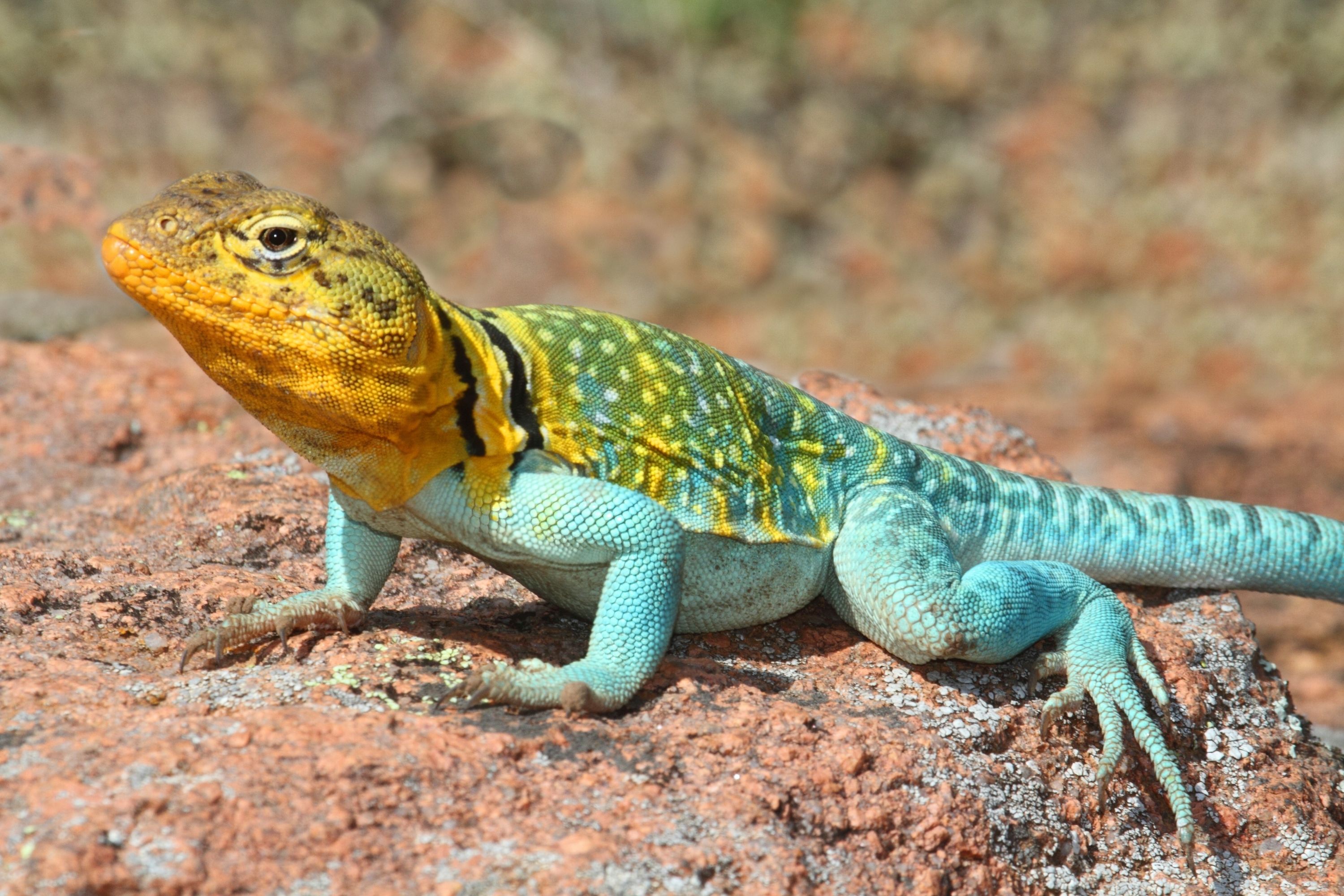Eastern collared lizard
(Crotaphytus collaris)

Description
The common collared lizard (Crotaphytus collaris), also commonly called eastern collared lizard, Oklahoma collared lizard, yellow-headed collared lizard, and collared lizard, is a North American species of lizard in the family Crotaphytidae. The common name "collared lizard" comes from the lizard's distinct coloration, which includes bands of black around the neck and shoulders that look like a collar. Males can be very colorful, with blue green bodies, yellow stripes on the tail and back, and yellow orange throats. There are five recognized subspecies. C. collaris can grow up to 8–15 in (20–38 cm) in total length (including the tail), with a large head and powerful jaws. Males have a blue-green body with a light brown head. Females have a light brown head and body. C. collaris exhibit a wide range of physical characteristics, particularly in coloration and spotting patterns, and this phenotypic variability may be attributed to a combination of differences in population, social organizations, or habitat. They are a sexually dichromatic lizard species with the adult males being more vivid and colorful than the females. Male dorsal and head color tend to range from green to tan and yellow to orange respectively, while females, overall, possess more muted body pigmentations, varying from brown to gray. However, when reproductively active during breeding seasons, females undergo a rapid color change, in which faint orange spots on their heads increase in brightness; this orange spotting reaches a maximum during egg maturation but gradually fades again after expulsion from the female’s oviduct as she lays her eggs. Both males and females have two distinct black bands around their neck, providing additional context to their name, the common collared lizards. Similar to adult females, juveniles also exhibit dull body colorations compared to adult males, but a key distinction is that the young have pronounced, dark brown markings that eventually fade as they grow and mature. Consequently, juvenile collared lizards lose this sharp cross-band pattern, and their features drastically change to resemble those of either adult males or females.
Taxonomic tree:







